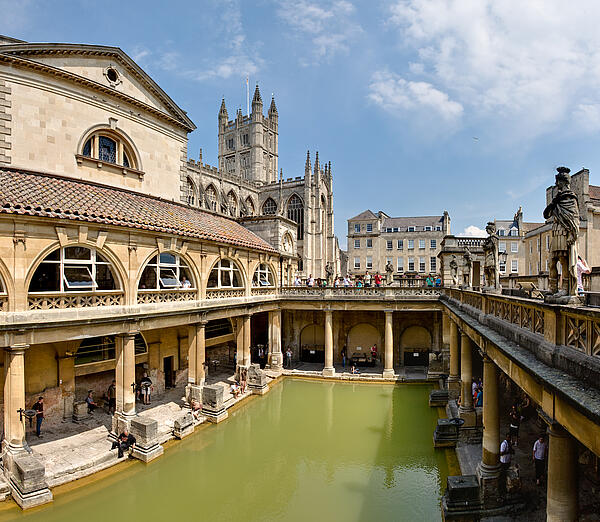Roman Baths
Every Roman town had its own public bath, which Romans would visit to bathe, socialise and relax. There were 170 baths in Rome during the reign of Augustus and by 300 A.D that number had increased to over 900 baths. In the English city of Bath you can still visit one of the best preserved Roman baths in the world.
Due to the lack of pipes in most people’s homes, the Romans visited the local baths to maintain personal hygiene standards. As well as being a place to wash, the baths were also a popular social meeting point in the community, where people could wash and stay on top of the latest news.
The bath complex was made up different baths with different temperatures. Visitors could use a cold bath (known as a frigidarium) a warm bath (tepidarium) and a hot bath (caldarium) equally before leaving. Large complexes would also have exercise areas (the palaestra) swimming pools and a gymnasium. Water always had to be supplied as the actual baths could be huge, purely to make a statement. Public baths were designed to accommodate local citizens and invite visitors from across the Empire.

Masseurs were also available to massage visitors and rub scented olive oil into their skin.
The baths were possible thanks to the Romans complex plumbing system, which meant that fresh water could be pumped into the water. In places such as Bath in Somerset, a natural spring provided the bath with its water, while in other towns the water was piped in through an aqueduct. The water was then heated by a central heating system, known as a hypocaust system.
When the Romans were crossing the west of England, they passed by the River Avon and found a hot water spring nearby. This spring brought more than one million litres of hot water to the surface daily at about 48 degrees (centigrade). To control water flow, the baths and a temple they proceeded to build a reservoir. From this, the town we now know as Bath was born around the complex. Many Romans believed the spring to be sacred so threw valuables in to please their gods. An altar was also built for priests to sacrifice animals and the waters gained a reputation of being able to cure all illnesses - naturally, a lot of townspeople across the Roman Empire travelled there to bathe.
See also: The Romans in Britain
MLA Citation/Reference
"Roman Baths". HistoryLearning.com. 2025. Web.
